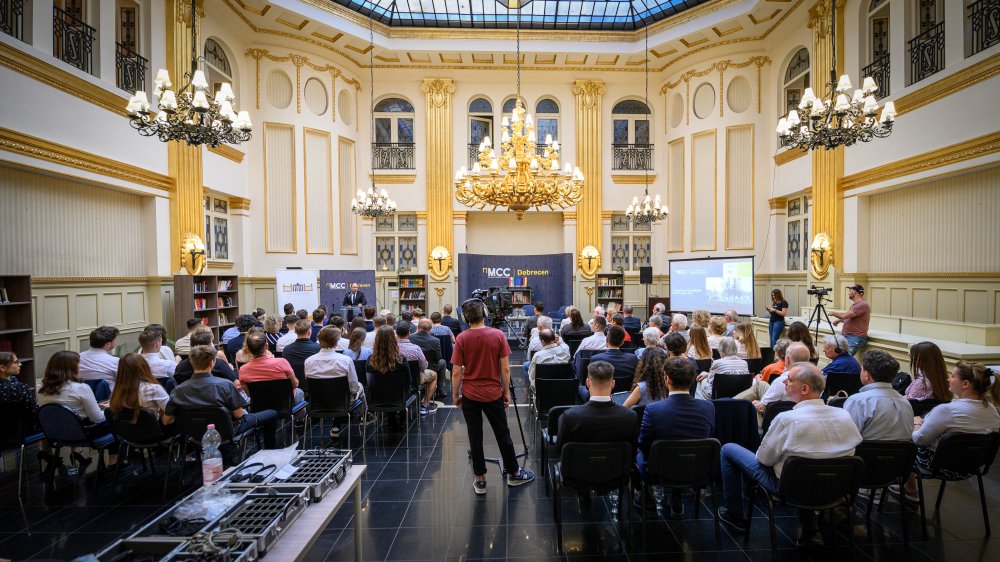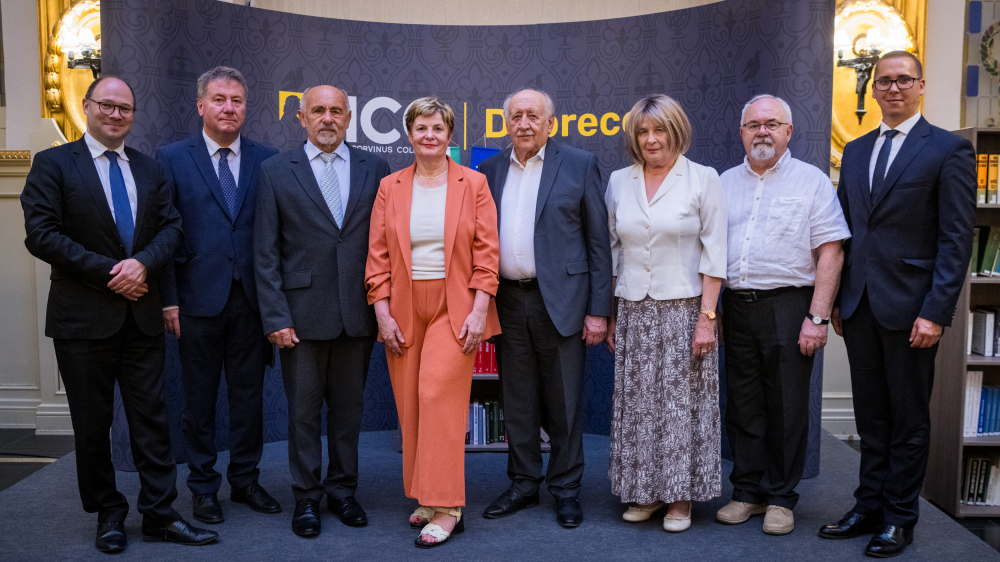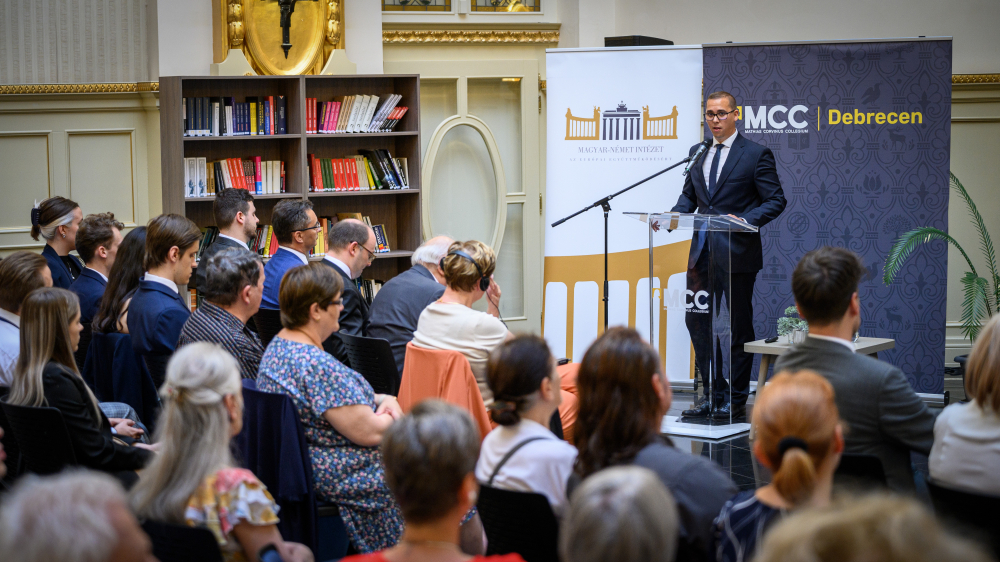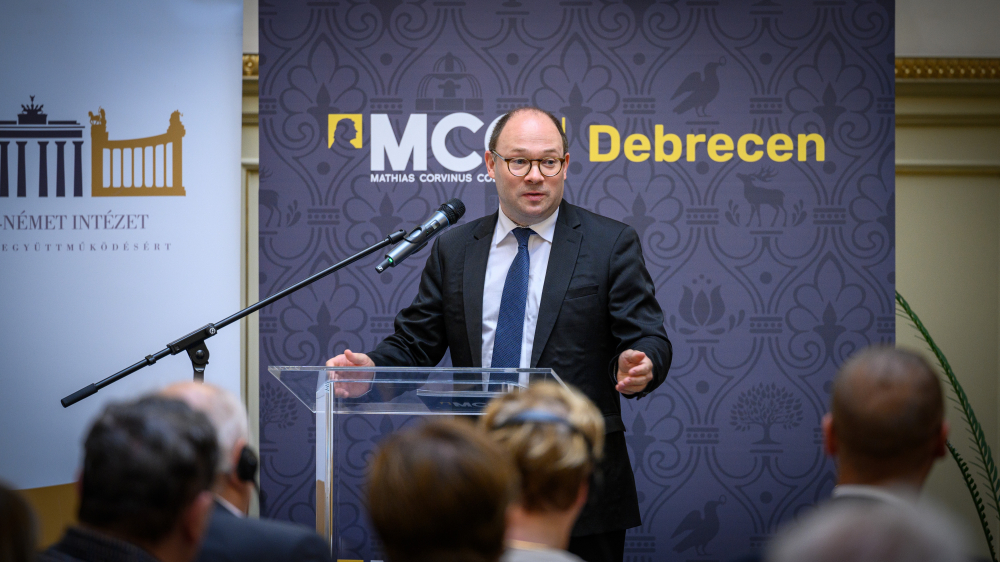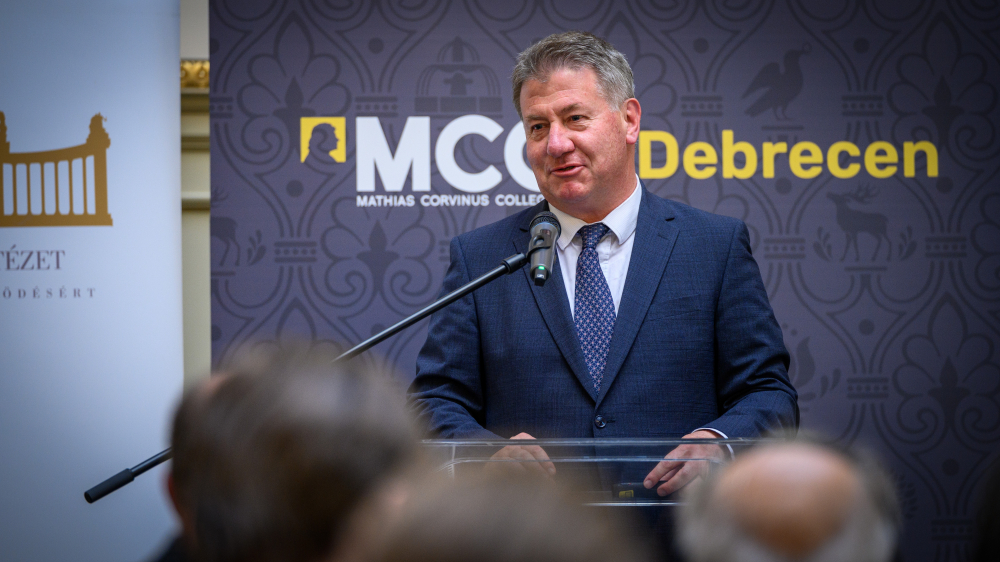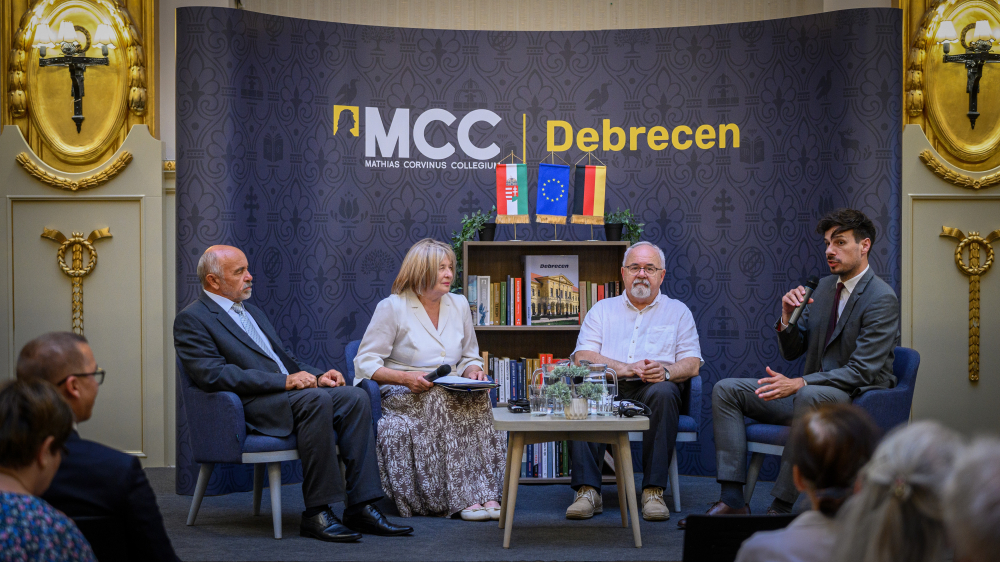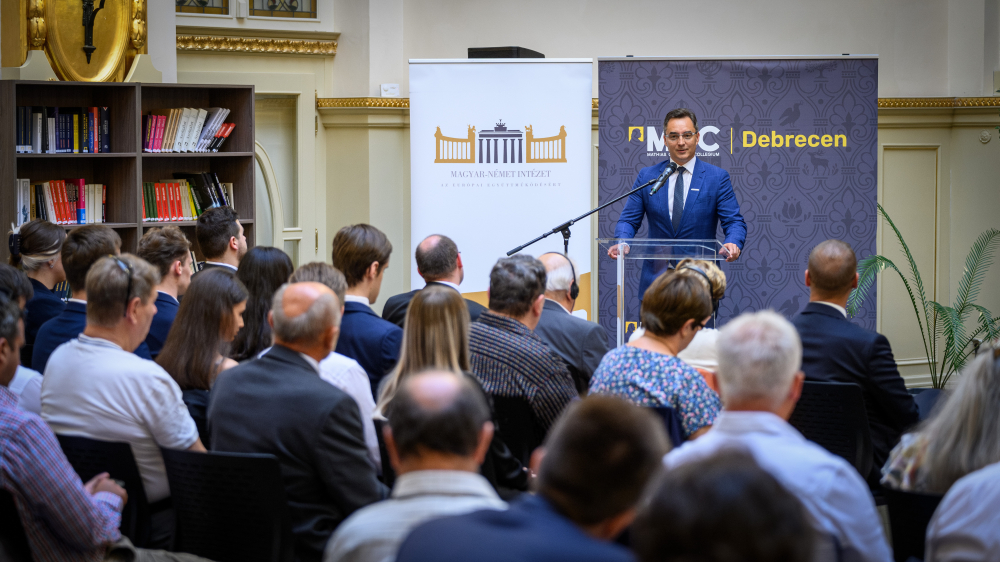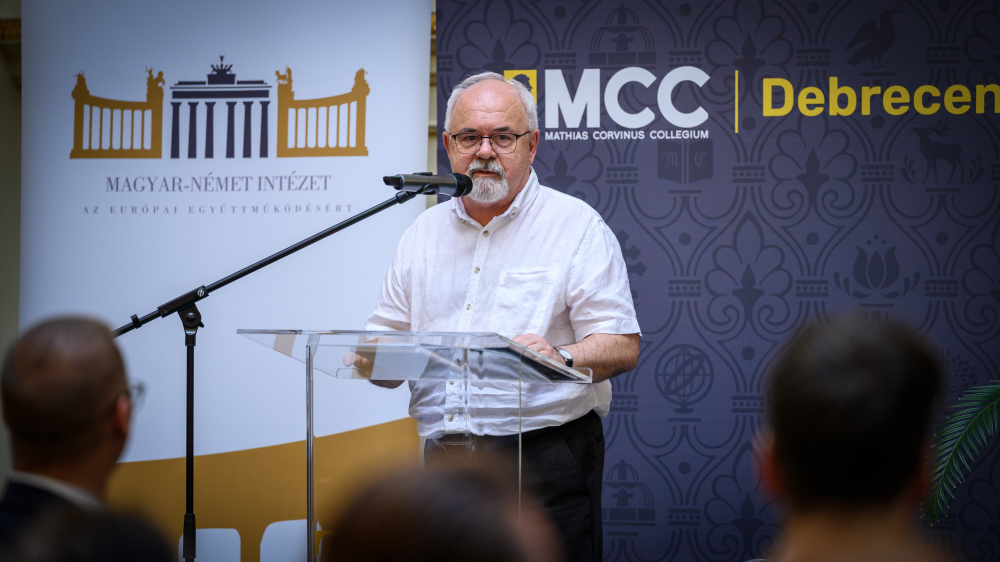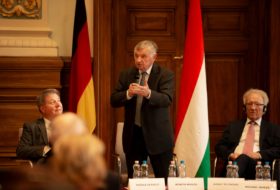The idea of the Pan-European Picnic, which was to be a turning point in the history of Central Europe, was conceived in the Cívis City in June 1989 at a dinner held in honour of Otto von Habsburg. We commemorated this pivotal occasion on 20 June at the former reception venue—the iconic Arany Bika Szálló (Golden Bull Hotel)—in the Mathias Corvinus Collegium (MCC) Debrecen Center.
Bence Bauer, Director of the German-Hungarian Institute for European Cooperation, called the attention of the young people present to the fact that the Picnic sowed the seeds of German reunification, which took root with the definitive demolition of the Iron Curtain and the large-scale release of East German refugees to the West, ultimately bearing fruit with the fall of the Berlin Wall. However, it is also true, he acknowledged, that the subsequent events on the western borders eclipsed the initiative of the Cívis City. The recognition of the equal role of Debrecen and Sopron nevertheless offers an opportunity to override the rigid historical patterns of the Western-Eastern, Kuruc-Labanc, Catholic-Protestant dichotomies and to achieve the Hungarian-Hungarian unification yearned for through the centuries.
In his welcome speech, the mayor of the city, László Papp, in addition to the evocation of Hungarian-German relations in the past, emphasised the positive examples of the present and the promising prospects for future development.
The next to address the audience, Gábor Turi, described himself as a “historical side character”. The former deputy mayor of Debrecen conveyed the late Kádár-era atmosphere of the seventies and eighties to the numerous young listeners. He explained that, in that tumultuous milieu, seeking ways of change, Otto von Habsburg presented an alternative to authentic Europeanism during his visit as a conservative “who would implement the reforms that the Left only prattled about”. Moreover, by signing a petition to close the Soviet military airfield on the outskirts of the town, the former heir to the throne declared his solidarity with the citizens.
Gergely Prőhle, director of our Foundation, referring to another recent anniversary—the reburial of Prime Minister Imre Nagy and his fellow martyrs of the 1956 Revolution on 16 June 1989—highlighted the multifaceted, compromising nature of the regime change. He urged the younger audience to draw on historical analogies to place opposing views in a global framework of understanding, such as the contemporary pro-sovereignty and pro-integration debates. And to bear in mind that even the most noble autonomy policies are doomed to failure without allies.
The keynote addresses were followed by a roundtable discussion, during which Mária Filep, Lukács Szabó, and Gábor Turi, the initiators of the event 35 years ago, answered whether this was how they imagined the future of Hungary and Central Europe in 1989. Péter Dobrowiecki, Head of Research at the Hungarian-German Institute, moderated the conversation.
Photos by Mathias Corvinus Collegium Foundation
